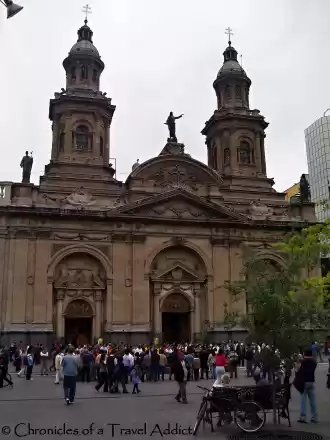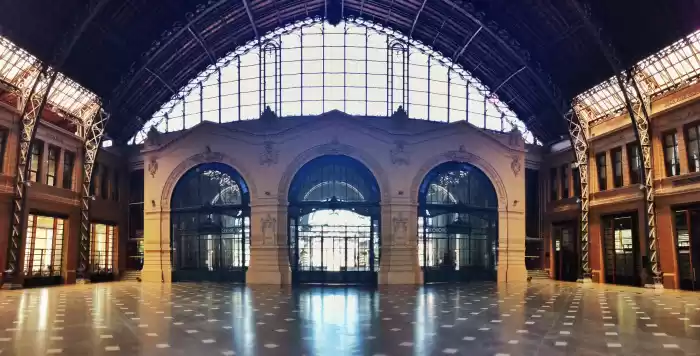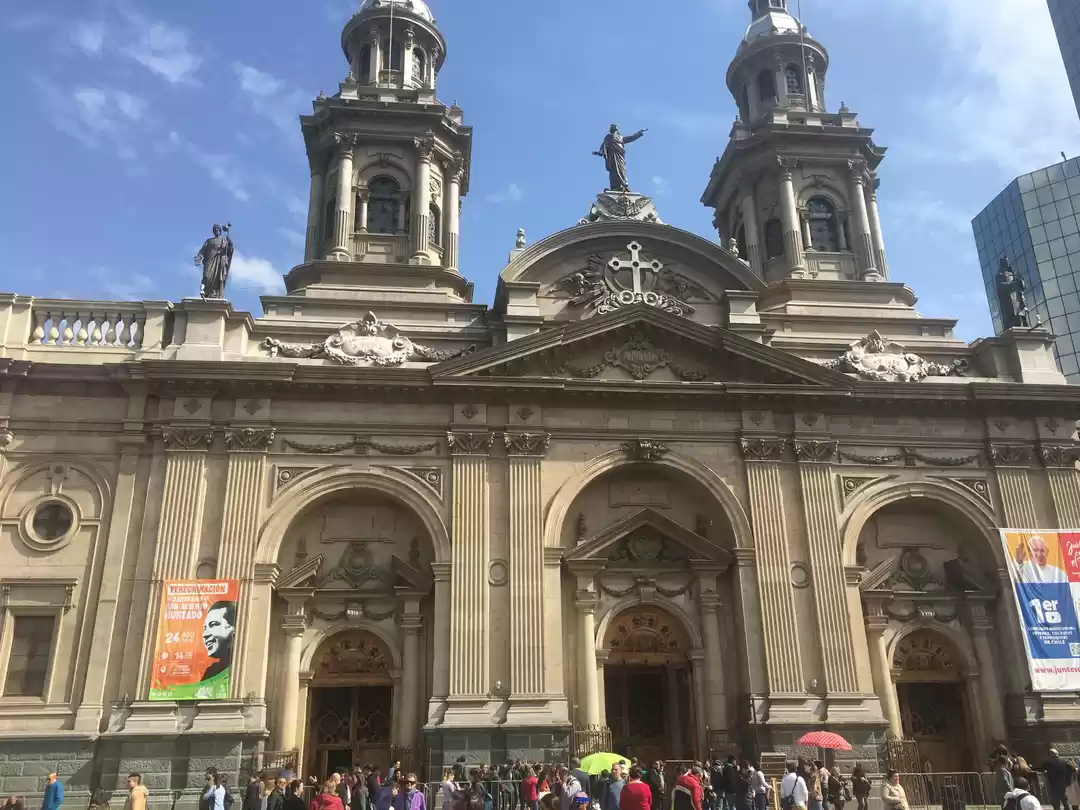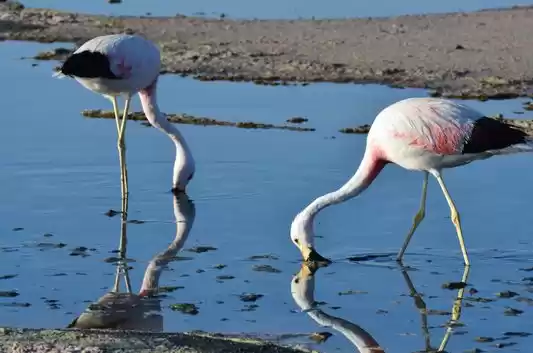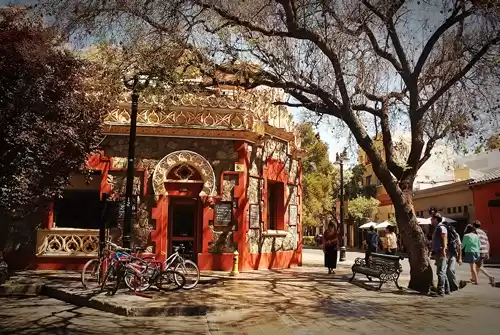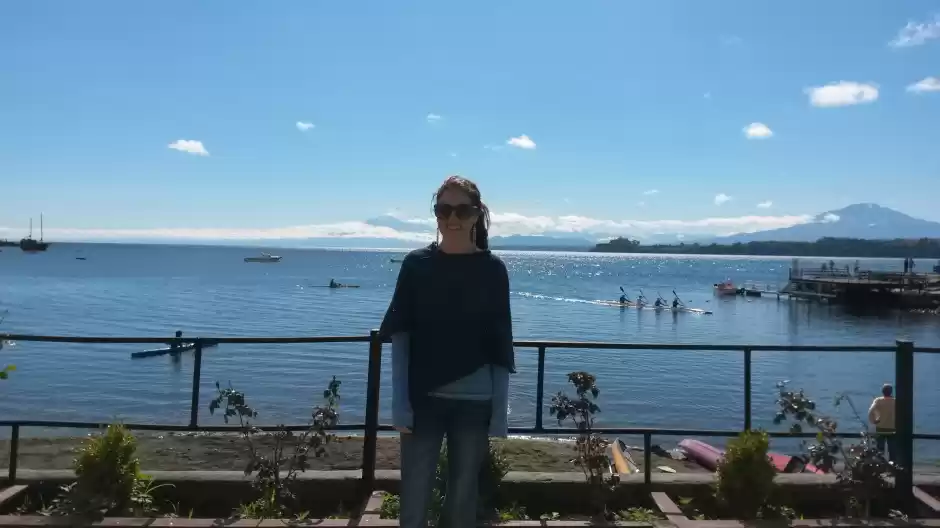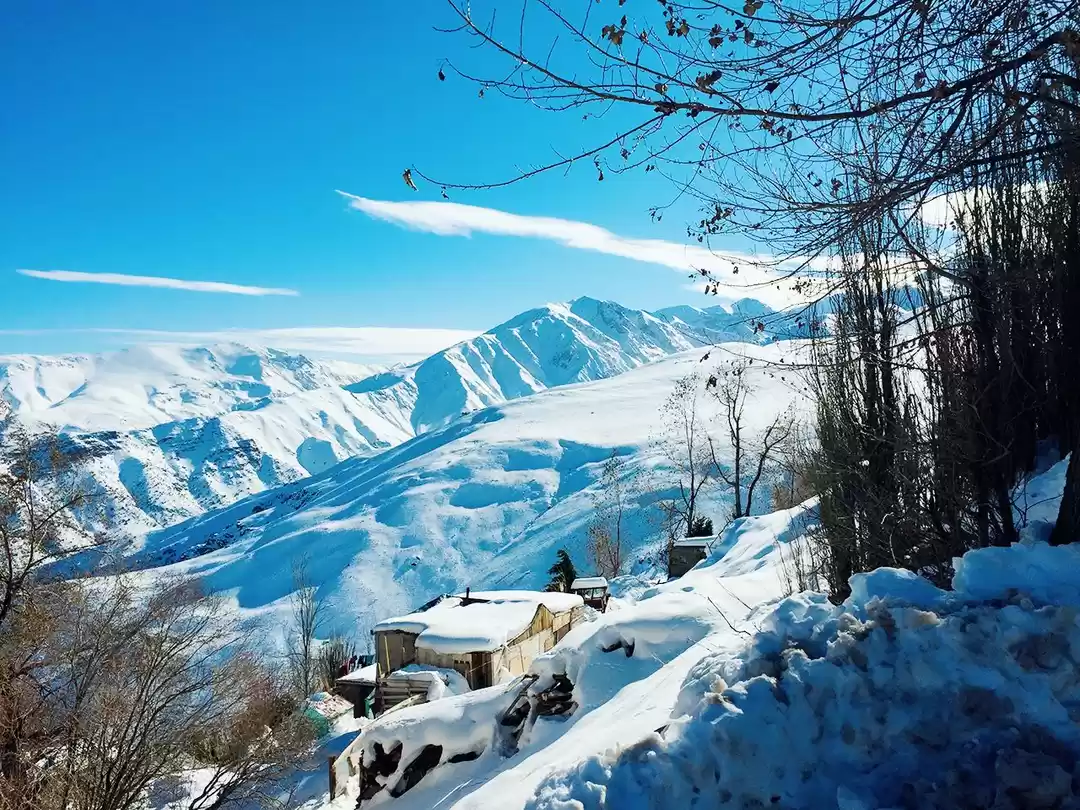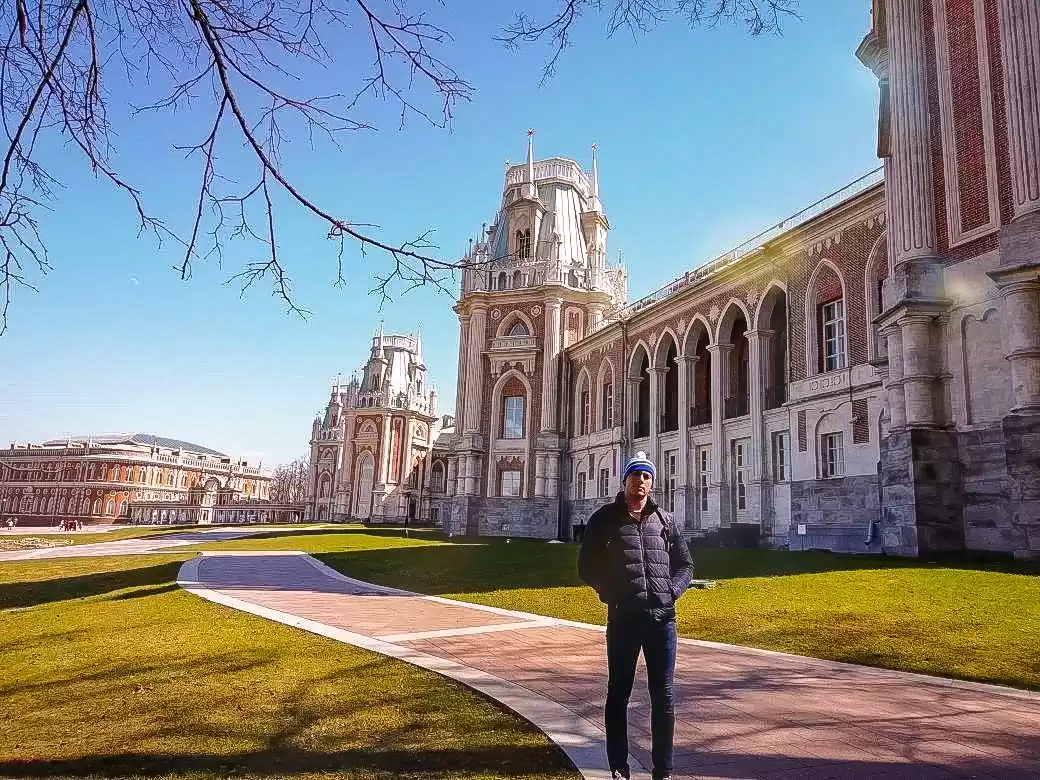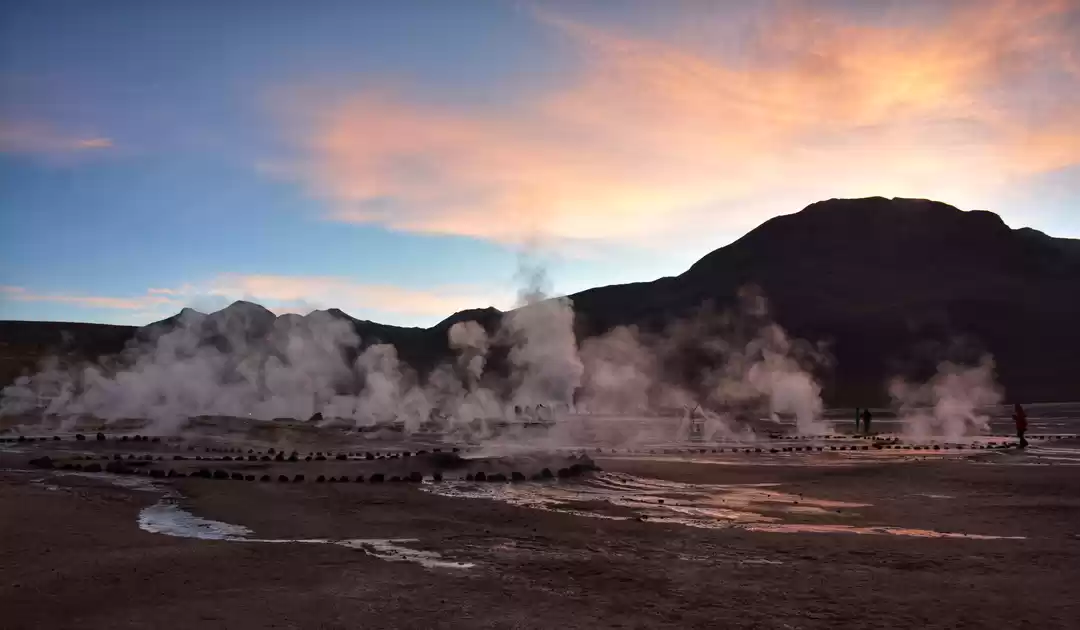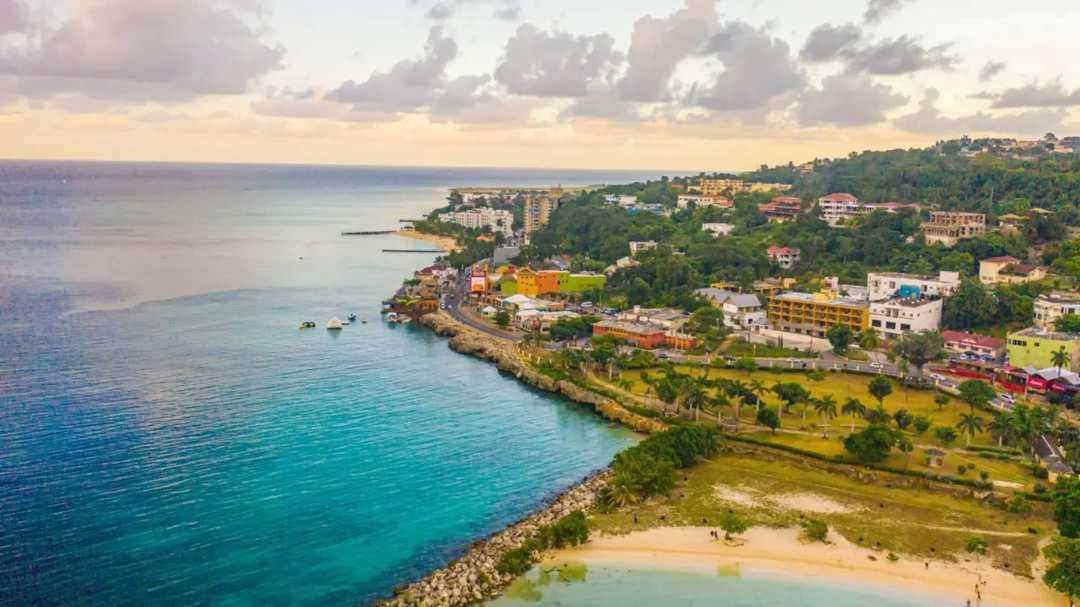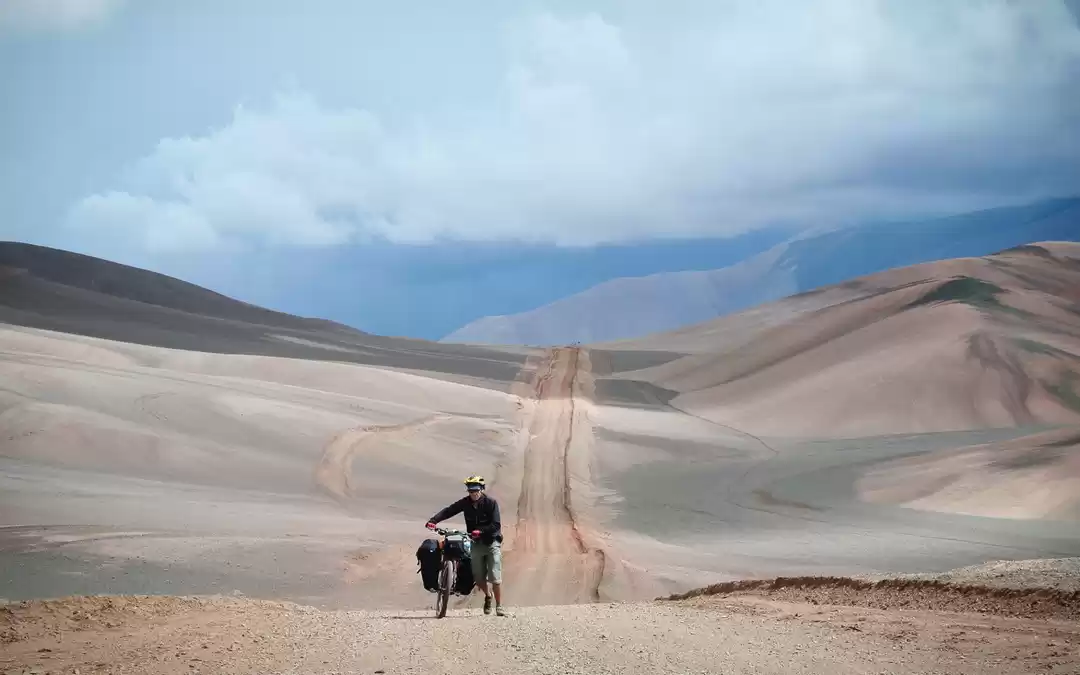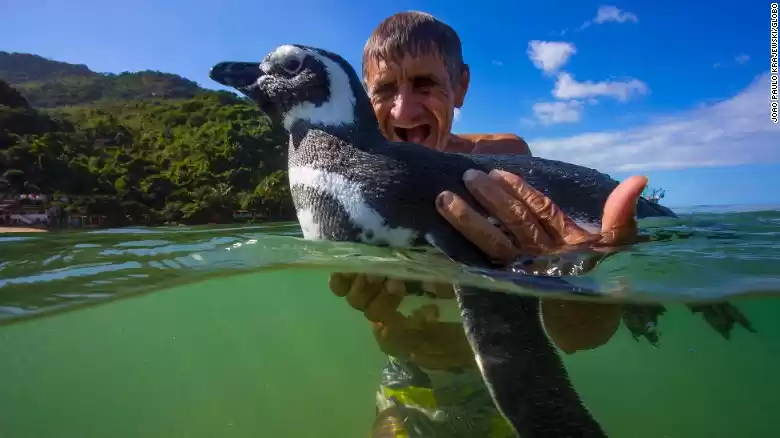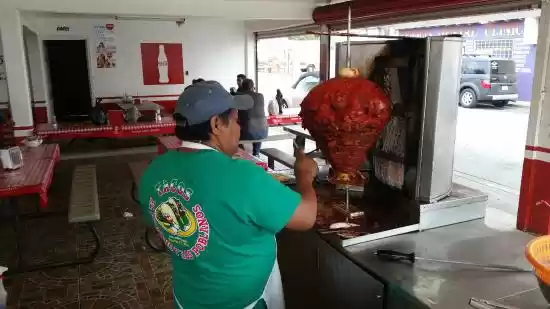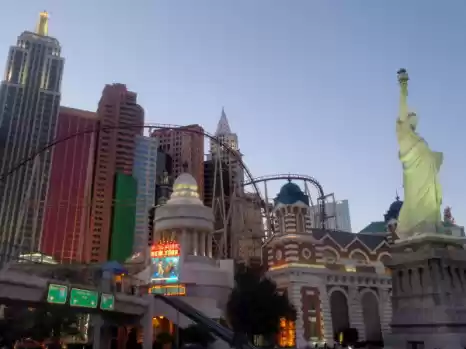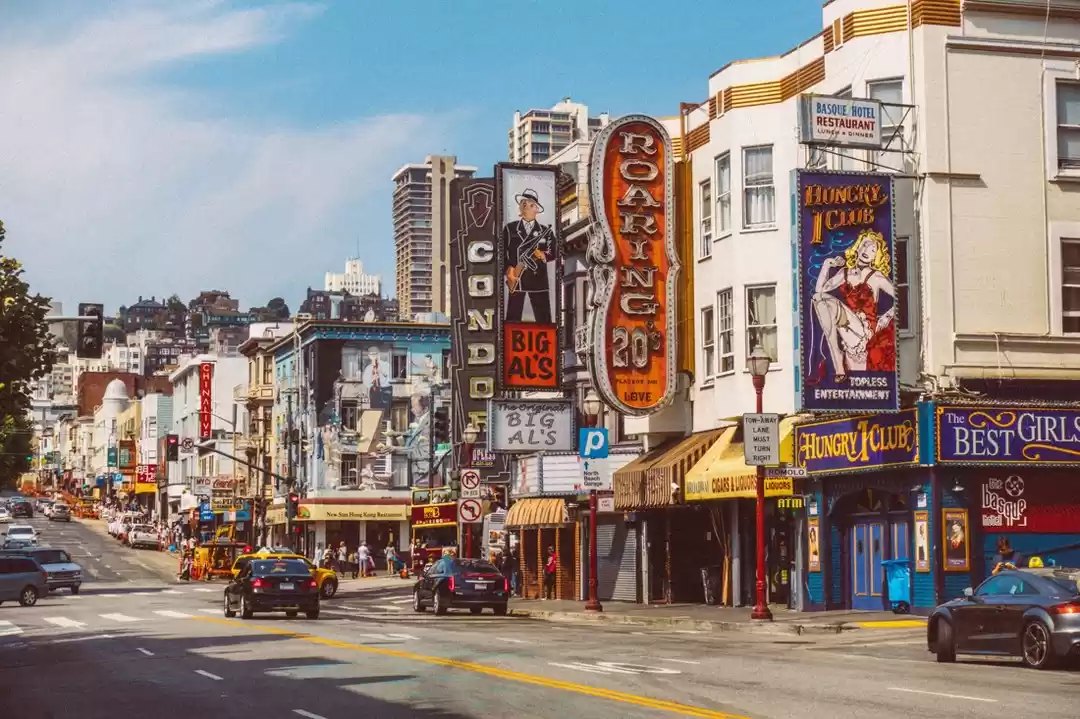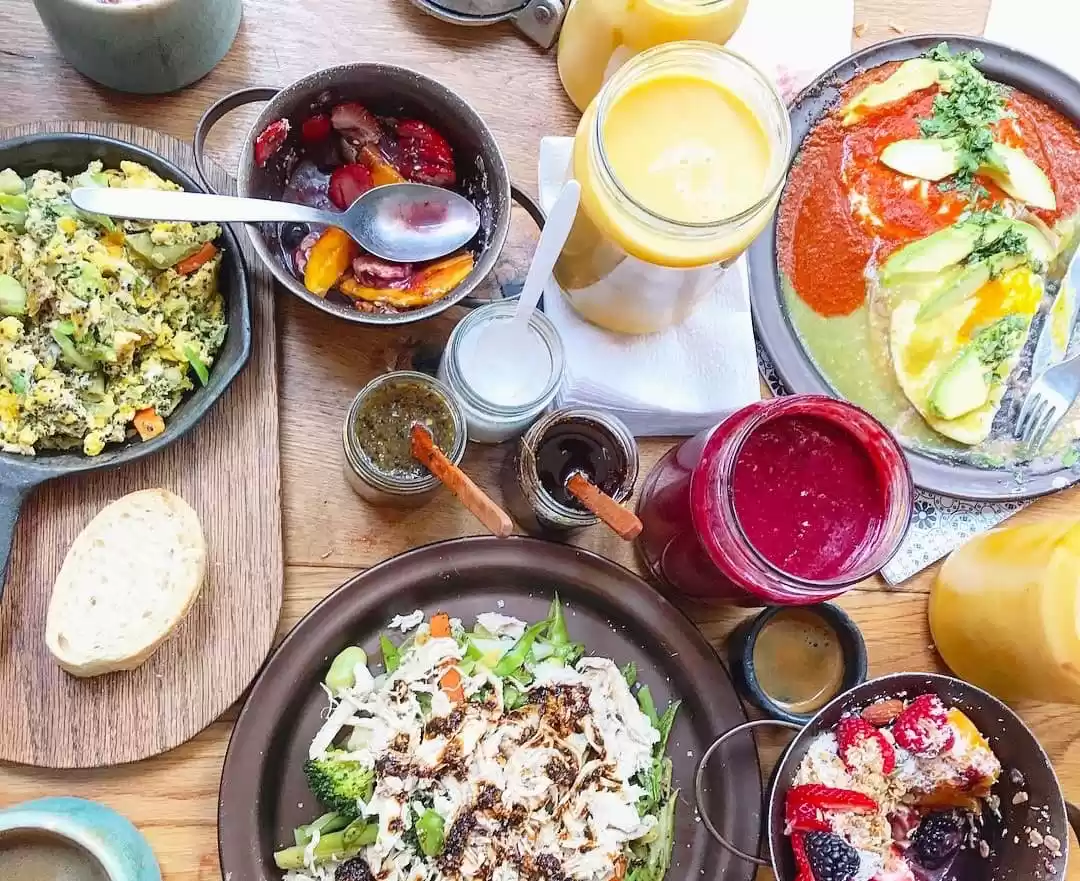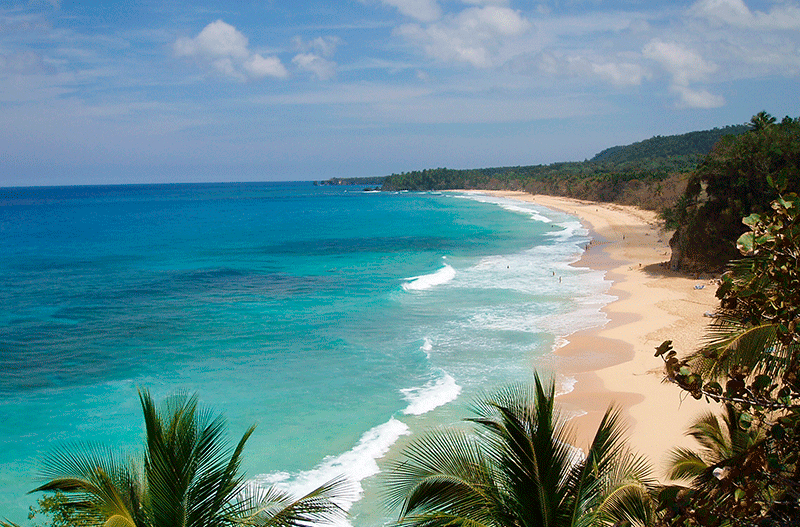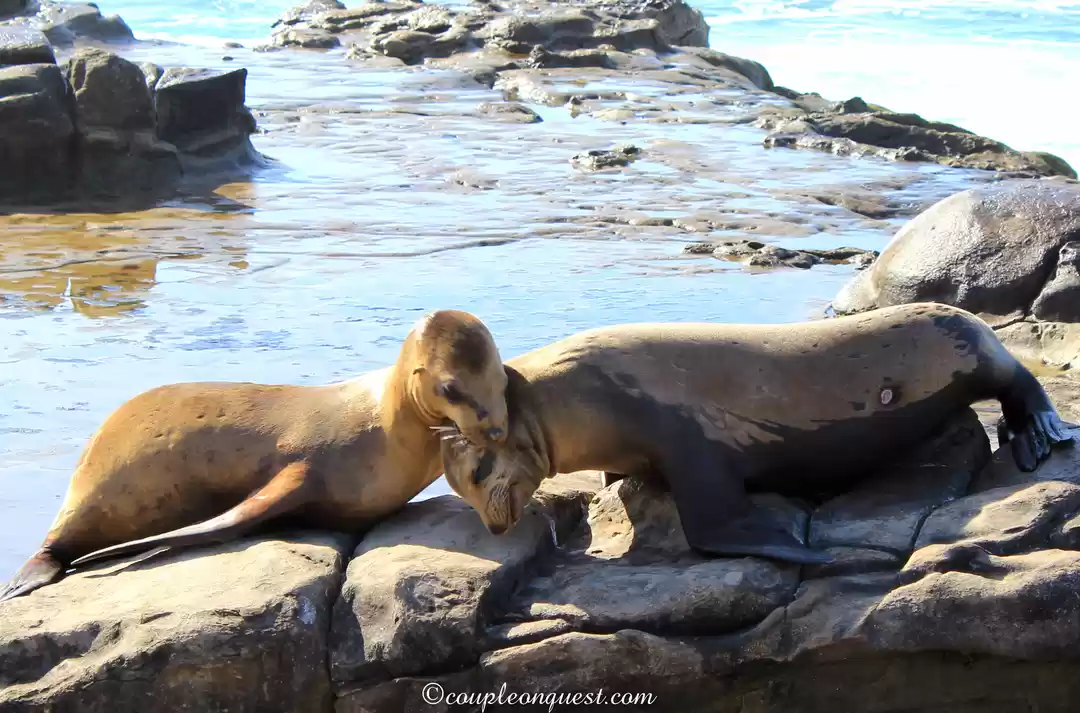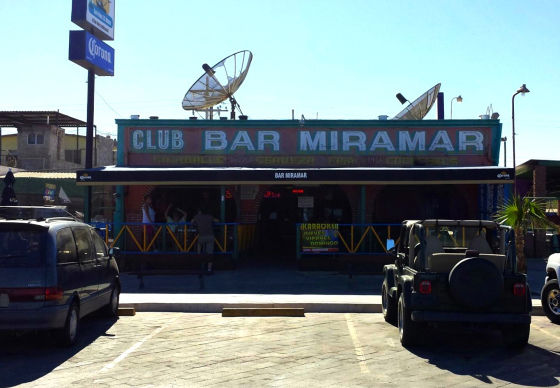
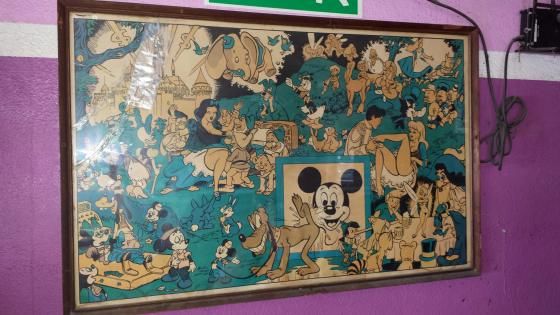
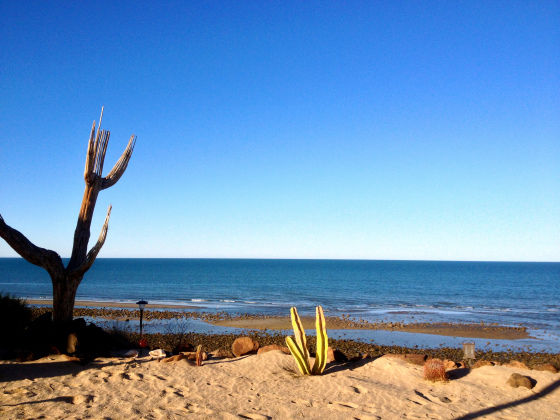
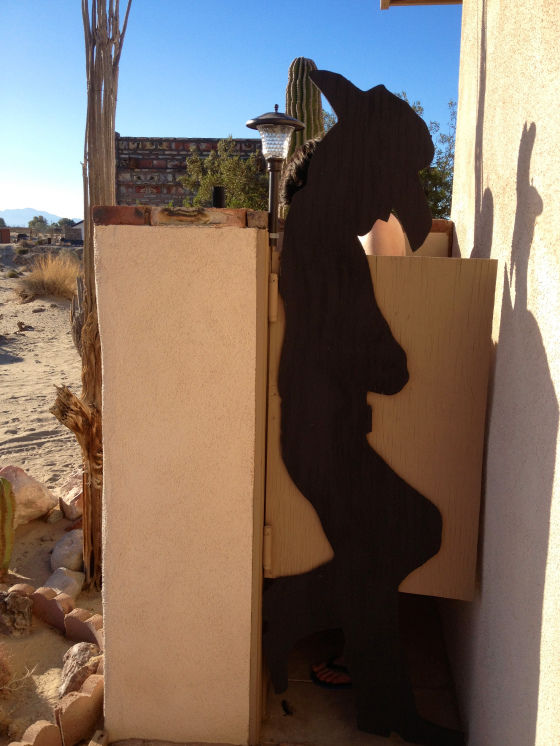
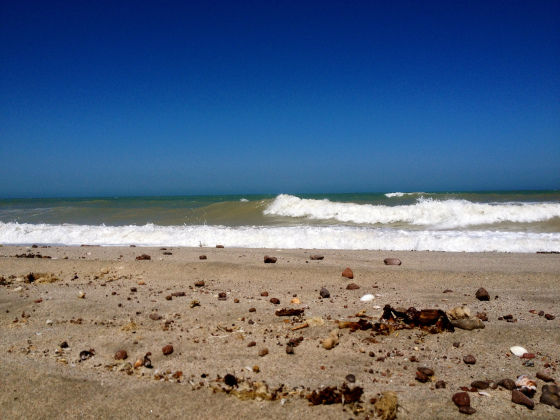
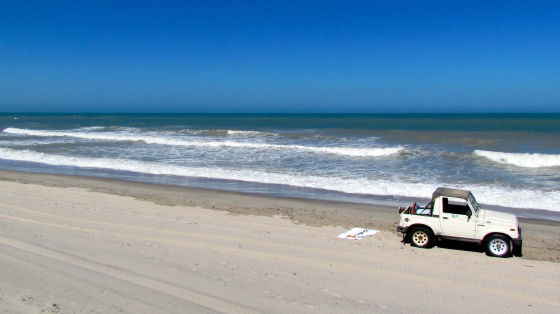
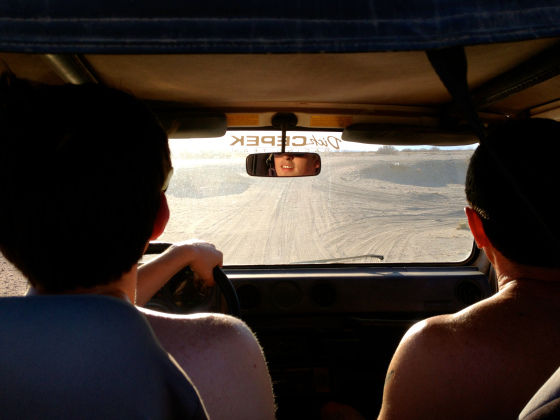
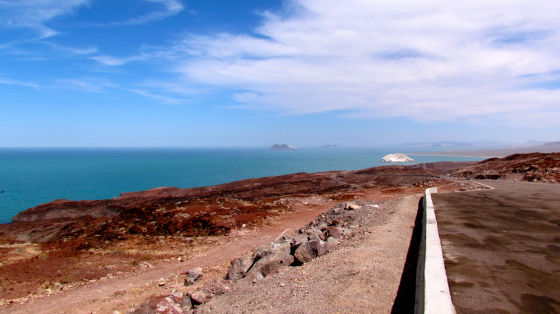
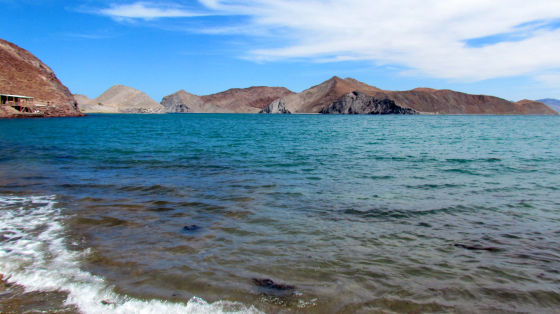
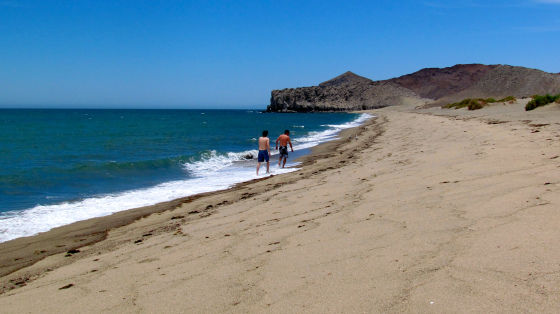
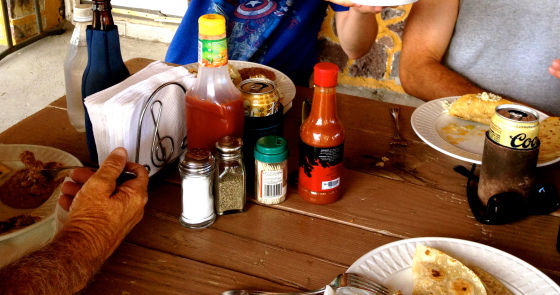
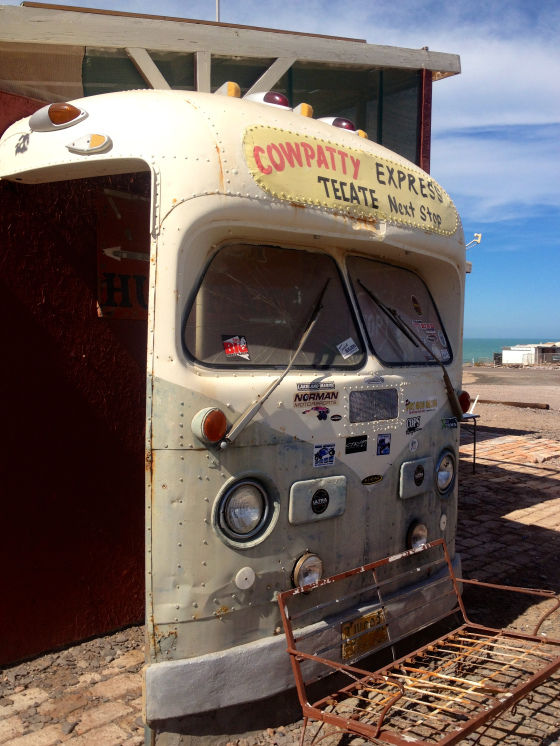
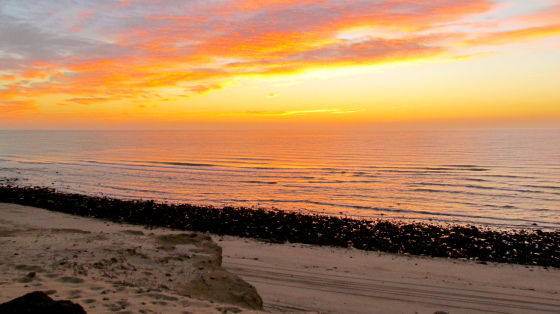
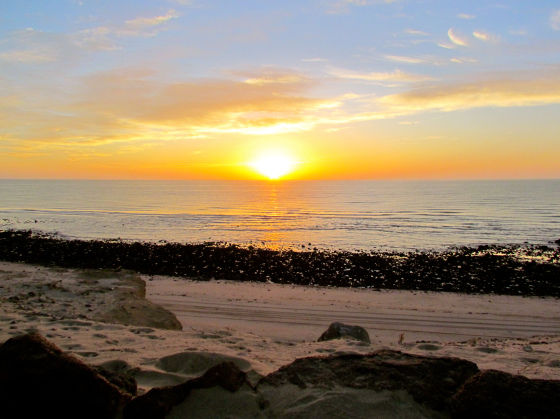
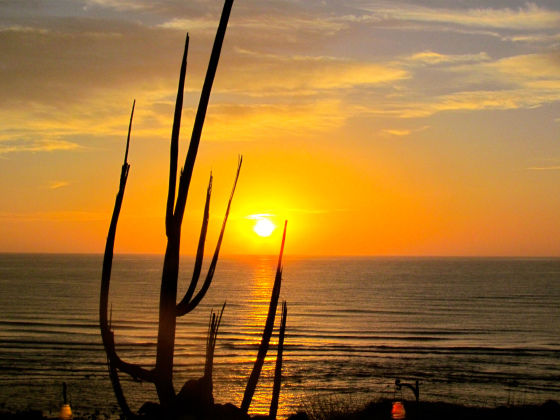
The sight of the bleached skull shakes me from my stupor, as I spot it from the window of the truck’s cab. After miles and miles of barren desert, cactus skeletons, and the shimmering mirage of the sea in the remote distance, my eyes have started to glaze over. I am bored of playing games on my iPad, and have become a victim to the monotony of the landscape, drifting off into random thought. Then there was the skull: the remnants of some animal I couldn’t pinpoint, sitting strangely innocently in the hot sand as we fly past on the deserted highway. I blink, and think Wow, welcome to Mexico.
We crossed the border between California and Mexico about an hour ago, in the southeastern nowhereness of El Centro and Mexicali. Border crossing was smooth, something my boyfriend, Trevor, and his dad, Tom, told me was uncommon: despite growing up in San Diego, this is my first time to Mexico.
I don’t know much about our destination, only that Trevor’s family “has property down there” – and we are headed for a campsite about 20 miles south of San Felipe. We’ll be spending a long weekend at camp, with the promise of sun, spa-warm water, and plenty of Cervezas to keep us occupied.
We roll into the small, bay-front town of San Felipe a couple hours later and stop into the family’s favorite bar: Bar Miramar. Parking the truck outside, Tom catches sight as I grab my passport, wallet, and iPhone, and laughs. “No one’s going to take anything here. Your stuff is safe in the car.”
Still. I smile back and politely tell him it’s no mistake that I’ve traveled around the world for six years without having a thing stolen. And I’m not about to get stranded in the middle of the Mexican desert.
The bar is blessedly air-conditioned (it reached a brisk 112 degrees on our drive in through the desert), and a couple of barflies line the counter at 4pm. Three ice-cold Dos Equis clink on the counter, Tom hands the bartender a couple pesos, and we sit down in front of a delightfully large box fan to admire the decor of the bar’s walls.
The beer goes down smoothly – too smoothly – and we chat with some long-time-no-see friends of the family’s when they walk in minutes later. I admire a poster of “Disney gone wrong” on the patio: raunchy paintings depicting Disney characters in inappropriate positions, offensive and yet somehow eccentrically charming.
For all intents and purposes, San Felipe is a ghost town today: stalls line the deserted streets and merchants excitedly show off their array of colorful dresses, fabrics, shells, and trinkets as we meander through. I haven’t brought cash with me, and I feel badly about not buying anything from them.
One woman lovingly fingers the soft fabric of a deep purple dress when I walk in. “It is very beautiful!” She smiles at me hopefully, and I feel guilty. I love purple.
“Si, esta muy bonito,” I agree with an apologetic smile.
We do, however, purchase several dozen homemade tortillas on the way out of town. Piping hot and natural, with no preservatives or chemicals, they are a tradition when the family comes to San Felipe. Their rich, flour-y smell fills the truck as we rumble down the highway again, bound for camp.
Turning onto a plain swath of sand that had been shaped into a driveway by campers’ vehicles, we leave the pavement and bump and sway our way toward the family plots on Campo Lupita, where Trevor’s Aunt Suzanne and Uncle Doug have already set up camp. As the truck bounces, I grin. This is what I remember about camping as a little girl.
The plots run along the coastal bluffs, where a stunning panoramic view of the sparkling blue Sea of Cortez greets me. Suzanne and Doug’s fixed-up trailer home affords us a front-row view, and recliner seats beckon beneath the shade of the deck cover. Cactus and more bleached skulls decorate the area that serves as a front yard along the slowly eroding cliffs, while flocks of seagulls and pelicans swoop by on a regular basis.
Behind the garage, a wooden silhouette cut-out of a cowboy stands guard on a swinging door, the entrance to a tiny urinal stall. The men, or at least Trevor, make it a habit of using this bathroom instead of the trailer toilets, because, after all, “using the Cowboy” is much more fun.
The surf is rough for this time of year, and the family is surprised. I am confused; call me crazy, but that’s how large bodies of water work on this planet – they wax and wane with the tides. It’s a daily pattern, no?
No. “Usually, that water is flat as a lake,” Tom tells me. “Just smooth as glass.”
Perhaps that’s the norm, but I don’t mind; flat, shallow water also makes an enticing home for basking stingrays. And I’m perfectly okay with a little surf to keep them away.
We grill up hot dogs that night and Suzanne serves homemade margaritas, as we talk and laugh beneath the pale solar string lights strung up around the deck. Our faces fall gradually into shadow, until I glance out at the night sky and suck in a breath.
It’s a new moon, and the inky sky is bedazzled with glittering stars. Like diamonds cast on a velvet blanket, they are alive and twinkling all the way to the horizon. I easily spot the Big Dipper, the pigmented shadows of the Milky Way, and Orion. When everyone else goes to bed, I grab my beach towel and spread it out in the sand outside our trailer, gazing up at the stars and lost in thought for a long time. I like Mexico already.
We awoke the next morning to unnaturally bright sunlight streaming in through the windows of our trailer. I hear Tom moving things around outside, and figure by the heat and the position of the sun in the sky, it’s around 10 or 11 o’clock. Surprised by how late we slept, I roll over and check my phone: it’s 6:30.
My jaw drops in surprise, and Trevor grins from beneath the cover of the blanket. “Welcome to Baja!”
We stay near camp that day, lounging around reading magazines and playing games, and taking the tiny beat-up Jeep Samurai down the beach to gather unique shells from a sand spit. The afternoon is spent soaking up the sun on the beach, and grilling chicken and salmon for dinner. Trevor builds a fire in the stone pit, and we sit around it sharing stories and admiring the star show once again.
I quickly learn that everyone down here is friendly. Neighbors spread out in both directions, though the camp still offers plenty of peace and privacy. The plot owners, mostly Americans, have rooted trailers or built small homes and garages on the cheap land, staking claim to their own little slice of Mexican paradise. In this, they have formed a community, in which they all look after each other like family. When someone needs help building a structure or laying bricks for a patio, they all pitch in, expecting nothing in return. When a strange truck pulls up to the neighbor’s trailers, they grab a metal bat, hop into their Jeep Samurai, and speed over to the property, only to find that the owners are, in fact, home.
Or at least, that’s what Tom does.
The next morning, we pile into Doug’s truck and set off for another campsite the family frequents: Papa Fernandez camp at Gonzaga Bay, some 70 miles south of Campo Lupita.
The family tells me I’m lucky to get this trip today; in years past, the road wasn’t paved and they took dune buggies all the way down. The trip took around 4 hours, they all tell me impressively, which warranted an overnight stay once they arrived at the bay. Today, we’re in a diesel-fueled 4×4 with an air-conditioned cab, listening to country music on Suzanne’s iPod as we coast down the highway. Doug slows the truck repeatedly for deep ruts and bumps in the road, where we can see gouges in the asphalt – the souvenir of other drivers’ poor judgment and their ripped-out undercarriages. But this is nothing to how the trip proceeded only several years earlier.
Gonzaga Bay is remote and beautiful: an inlet of deep turquoise water surrounded by crumbling cliffs and dotted with islands that shimmer in the haze. We can swim here, for the surf is gentler, and the water is warm. Jumping fish splash around close to shore, where Tom says the dropoff comes quick.
We aren’t allowed to drive our buggy along the beach, because sea turtles hatch their eggs here. Instead, we park it over the dune and run through scalding hot sand to get into the water, where rocks tumbling in the surf bruise and scratch our feet in the first foot or so of water. The land slopes quickly, though, and soon we are deep enough to float above them. Trevor laments that, because of the surf, we can’t float with bottles of beer in our hands. I think we’ll live.
We bask in the spa-like water and deliciously warm sunshine for about an hour before we pile back into the buggy and head to lunch with some more friends the family knows here.
The mom and pop shop, Papa Fernandez, looks like nothing more than a beach shack, with picnic tables set outside in the shade. We have brought our own drinks, and we crack open some Coors Light while we wait to order. The young woman at the counter inside can’t be more than 20, and she doesn’t speak much English.
Trevor starts to order. “The combination plate, please, and can I get tacos with beef?”
The girl looks at him blankly. Excited for any excuse to use my high school Spanish, I jump in. “El conbinacion plate, por favor, y tres tacos con carne.”
She smiles and notes the order. I continue with mine. “Tienes pollo?” (“Do you have chicken?”)
She runs into the back to check. “Si!”
“Quesadillas con pollo, por favor.”
Our order is in, and Trevor and I walk outside. “Who knows Spanish now?” I beam at him stupidly.
Our meals arrive about twenty minutes later, served piping hot on paper plates. There is a bowl of refried beans, spicy salsa, salsa fresca, and bottles of hot sauce that aren’t spicy enough for Tom. Trevor’s tacos drip condiments and juices, a sign of delicious tacos. Tom tucks into his burrito; I bite into my chicken quesadilla and sigh. There is truly nothing like homemade Mexican food.
When we go inside to pay, I watch as the girl takes out a small notebook and adds up each person’s total with a pen. She flips the notebook around to face us and points to the total due, announcing the number in Spanish. We give her U.S. dollars (along with a tip) and she grins, bidding us a good day. “Muchas gracias,” I smile at her as I close the door behind me.
“De nada!”
We head back out on the road back to camp, full of Mexican food and tired from the sun. I watch the waters of the bay glitter in the afternoon rays, and we stop for a few photo ops, as well as a quick visit to a charming little bar called the Cowpatty. The owner has a handlebar mustache and a dog named Laser, who becomes fast friends with Tom. Steer skulls and license plates decorate the interior walls, while the front of a Volkswagen Bus frames the side wall, and a small rowboat houses a green alien prop in the yard. It’s eccentric, and it’s awesome.
Back at camp, Trevor and I head down to the beach while everyone else cracks open more beer and prepares to grill our last dinner. We’ll leave early the next morning, and we all agree this trip was too short.
I awake just as the sky turns pink the next morning, and I can see the rosy clouds from our trailer window. I debate getting up to watch the sunrise; it’s just after 5 and we have to be up at 7. Finally, I decide that watching a Mexican sunrise over the Sea of Cortez in Baja California is hardly a regret-worthy event, and I can sacrifice the extra sleep for travel moments like this.
I grab my Canon, wrap my beach towel around me for warmth, and pad out to the bluffs outside Doug and Suzanne’s trailer. The camp is silent and still; the only sound comes from the early morning surf and the occasional splash of a pelican swooping into the water for its breakfast. The sand is cool and the air is comfortable. I watch the reds, pinks, and golds morph and gather on the horizon; as a San Diego native, it is a strange phenomenon to watch the sun rise out of the water instead of sink into it.
A man walks by on the beach below, and I take my eyes off the horizon for two seconds to watch him. When I look back, the fiery orb has already breached the water line. I watch it lift up out of the sea and rise slowly into the sky, casting golden rays along the water all the way to shore.
The air warms as the sun gains strength quickly, and within ten minutes the camp is illuminated in the soft golden light of sunrise. I get up to leave, and take one last picture through the cactus skeleton that dominates the bluff line.
Moments like these always take my breath away, and remind me why I love travel with every ounce of my soul. Someday, I’ll be back to this little desert paradise – and hopefully soon.
But until then, I’m dreaming of turquoise waters and homemade tortillas, a sky full of diamonds and a Mexican sunrise.
This trip was originally published on Stranger In This Town.


